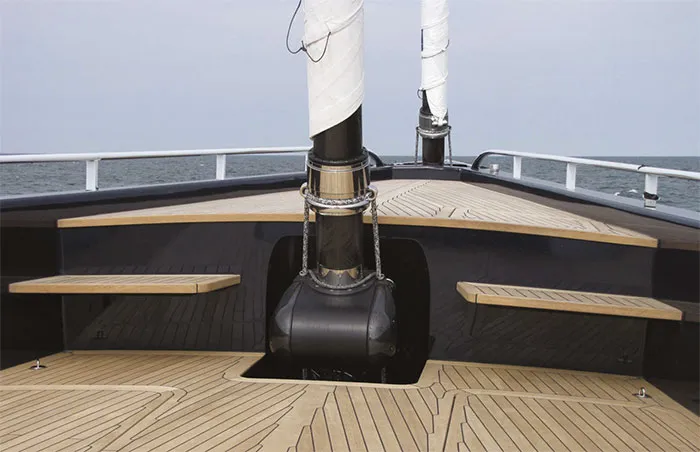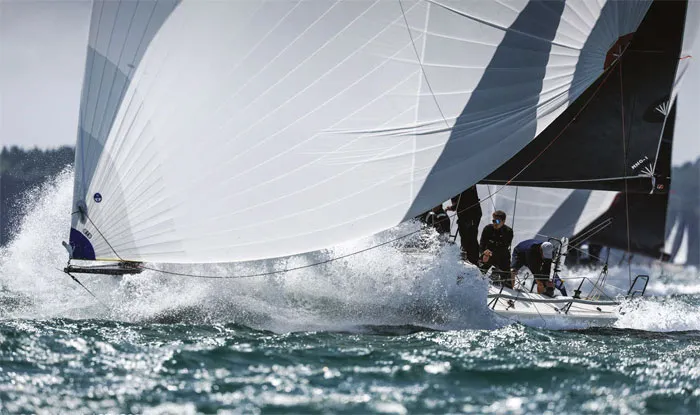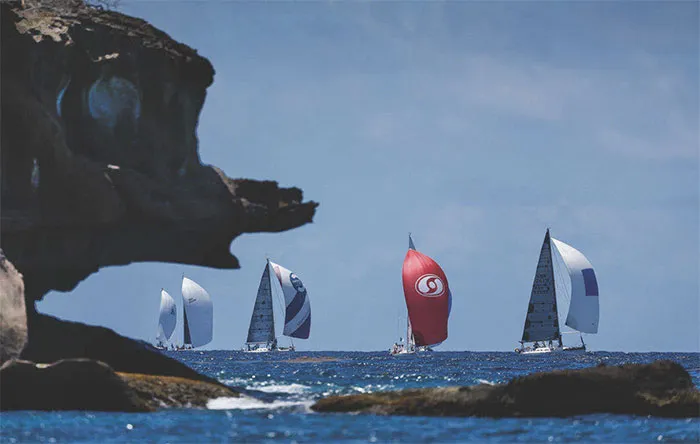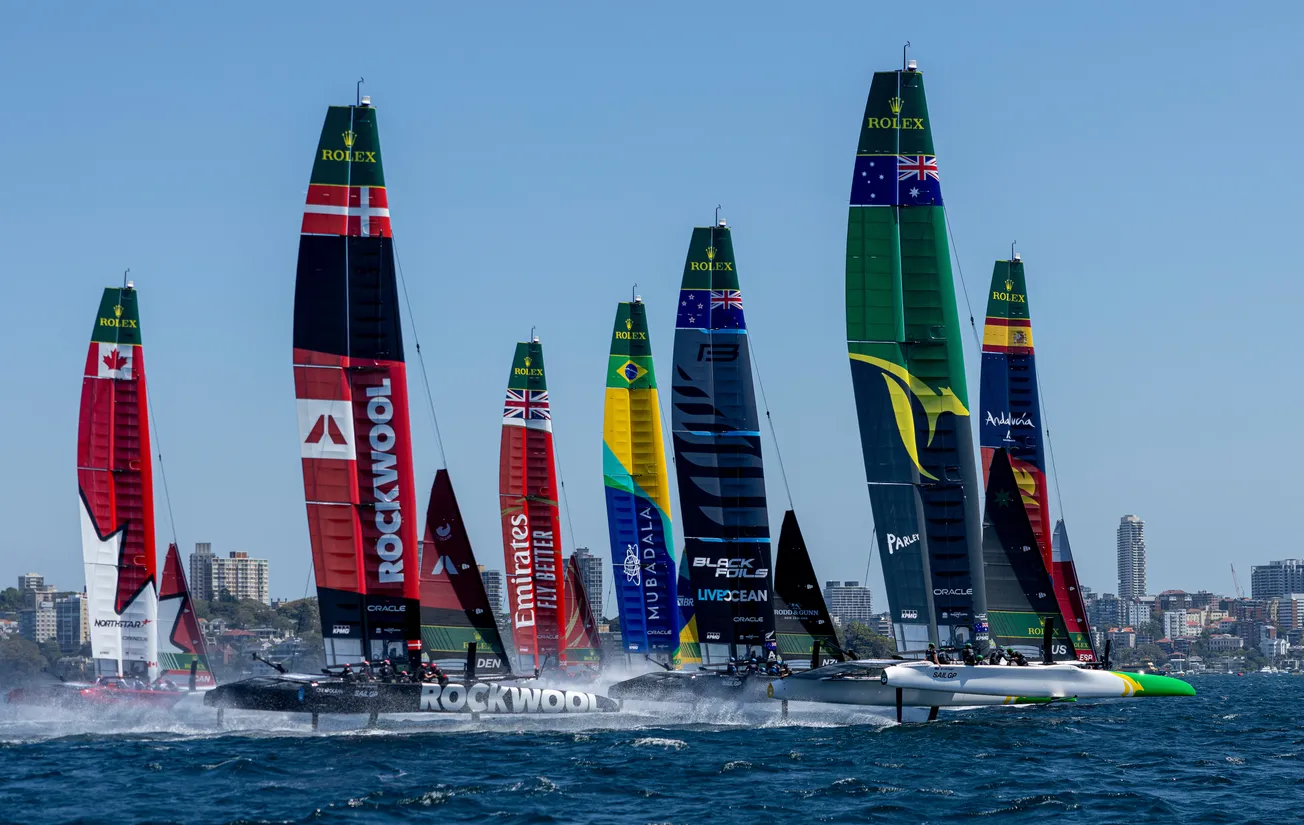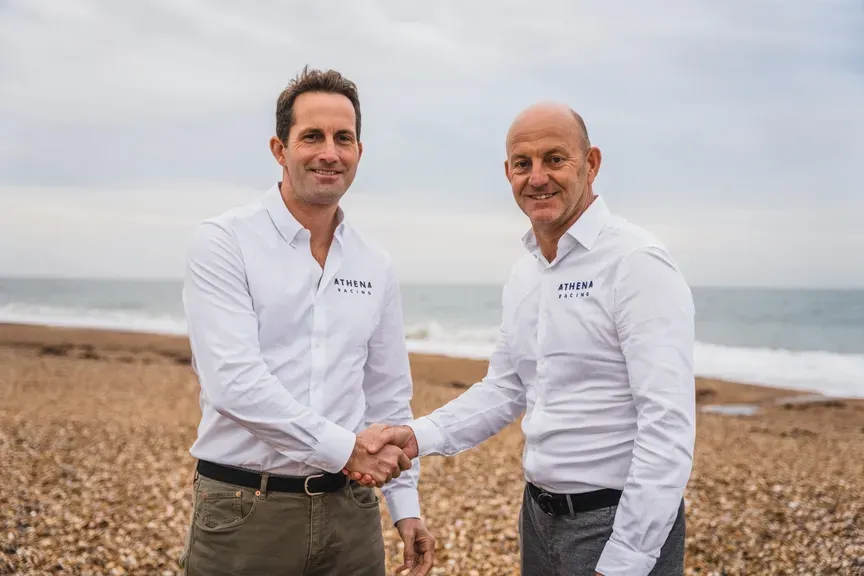


Some of Reckmann’s client relationships are as enduring as the service life of its headsail furlers, which can famously last a lifetime. For example they’ve been supplying sail-handling systems to Nautor Swan on a regular basis for most of the shipyard’s history. It’s no surprise that the headsail, code sail and staysail furlers on hull number one of the new Swan 128 are once again supplied by Reckmann.
‘My father Horst started our cooperation with the founder of Nautor, Pekka Koskenkylä, in the early 1970s,’ Reckmann CEO Marcus Schuldt explains. ‘So we have been a supplier to Nautor for more than 50 years. At that time they were looking for high-quality furlers and marine equipment which could stand up to their expectations in regards to quality and performance. I’m proud to say that we have supplied furling systems for most of the Swan models that have ever been built.’
How many Swans in total have been fitted with Reckmann furlers? ‘That is difficult to say but I would estimate the number to be 1,000 or more,’ he says. Nautor remains one of Reckmann’s regular clients today. ’They don’t have a sole supplier for any of the models in their current fleet but we supply furlers and hydraulics for the Swan 55, 58, 65, 80, 88, 98, 108 and 128.’

As yachts get ever larger and more powerful, with smaller crews to handle them in cruising and delivery mode, Reckmann is keeping pace with their requirements. ‘For the Swan 128-01 we offered very attractive terms for extremely reliable and powerful, high-quality units,’ Schuldt says. ‘Our business relationship with Nautor is built on five decades of trust and they have complete confidence that they can rely on us and our service.’
Beyond the allure of being the new flagship of the Maxi Swan fleet, 128-01 is an interesting boat in her own right. All possible options were ticked for boosting the 128’s sailing performance – and every opportunity was also taken to raise the levels of comfort on board.
One of the key requirements was exceptional boatspeed in just 6-8kts of breeze, which reflects the typical summer cruising conditions on the Costa Smeralda where 128-01 will be based. She therefore has an oversized sailplan with a significantly larger genoa, staysail and mainsail than standard spec, plus a huge code sail for offwind power.
The superyacht regatta circuit is part of the planned programme of use, so her rig, sail wardrobe and sailing systems will need to perform well across a wide range of wind speeds in a highly competitive, fastpaced environment. The ability to make offshore and ocean delivery passages is also key. In cruising and delivery modes, she will be operated by a small crew – typically four people, with a maximum of six – so easy handling in all wind and sea conditions is crucial.
Both the performance and the reliability of Swan 128-01’s sail-handling systems are thus of paramount importance, for obvious reasons. And any weight savings that can be made in the rig will pay dividends on the racecourse. She therefore has a high-modulus carbon mast and boom from Southern Spars, and three underdeck furling units from Reckmann.
The 128 is the second largest Swan ever built, but Reckmann has a wealth of experience with yachts of this size (and many much larger ones), so they were able to offer pre-engineered solutions from their extensive range of furling gears to handle 128-01’s headsail and staysail. ‘This is a midsize project for us and we have collected data from many big boat projects, which helps us to optimise the furlers in regards to size and loads,’ Schuldt explains. ‘The units on 128-01 are standard units from our product range which fit their load requirements precisely.’
‘The headsail furler is a UD-5.5sc TC unit with a real time adjuster for the headstay. “TC” means it’s designed for a torsional cable and to be used without headsail foils. It’s a hydraulic unit that runs at around 60 litres per minute, with oil pressure of 140bar. The furling torque is reduced to around 850Nm to avoid damages to the torsional cable.’
A rapid, reliable furl is obviously a major benefit on this boat, whether she’s cruising in gusty conditions with guests on board, rounding the upwind mark in a race, or sailing offshore between regattas or cruising grounds. ‘The furling process takes around one minute,’ Schuldt says, ‘depending on the LP (luff perpendicular) of the sail.’
Swan 128-01 is a cutter-rigged sloop with a self-tacking staysail, for which Reckmann supplied an SF-30s furling unit. This is designed to handle stay loads of up to 30t and can furl the torsional stay with approximately 800Nm of torque.
On both of these furling systems, Reckmann’s titanium halyard swivels deliver a significant weight reduction at the top of the rig, where it is most useful, combined with a very compact size and the capacity to handle extremely high loads. For example, the headsail furler’s top swivel weighs 14kg and has a safe working load of around 50t. The staysail’s top swivel, designed for up to 40t of load, weighs just 9kg.
With a massive code zero that uses the latest sail technology to full extent, a custom furling unit had to be designed, engineered and tested for Swan 128-01. The goal was to eliminate the free-flying tack swivel and still be able to tension the stay and luff of the sail to the deck, to allow the use of a halyard lock. That was business as usual for Reckmann’s design office, which is set up to handle requests of this nature.

‘The idea for this solution is to offer a stay tensioning system without a hydraulic ram in the furling unit,’ Schuldt explains. ‘The request was for a length adjustment of around 500mm and the main parts are made out of stainless steel.’ One major benefit of Reckmann’s CZ range is that these compact, lightweight hydraulic turning padeyes can operate at extremely high speed, so even the largest sails can safely be furled very fast.
‘Normally it takes around six months for our engineers to design a custom unit of this size and we run full FEA (finite element analysis) for every single part of the assembly. We put all custom systems on our different test rigs in the workshop to test the system performance.’
Reckmann has an excellent track record of making prototypes and custom solutions that work perfectly straight out of the box in specific applications with unique load conditions, and they have another project under way that presents an interesting challenge. This is a commission to supply all-electric furling systems for Vitters’ Project Zero – a 69-metre ketch that pushes the boundaries of superyacht technology into uncharted waters by having no combustion engines or fossil fuels on board.
All of the energy required to power this yacht of the future – which is due for delivery later this year – will be generated by solar and wind energy. Reckmann’s role is to design and supply a larger and much higher-powered set of electricpowered sail furling systems than any that have yet been built. To give some sense of scale, the yacht’s blade jib is 560sqm, her staysail 310sqm and her mainsail 447sqm, with clew loads of up to 25t.
‘The idea for the switch to electric furlers was to avoid the need for a big hydraulic power pack to run these units, and also to reduce the work for installation,’ Schuldt explains. ‘No hydraulic pipes or valve blocks are needed.

‘The challenge for us is to generate the required power and torque load at the furler unit with a design and motor of a reasonable size. We have separated the front gear with its worm gear drive and the main gear with its electric motor to achieve a compact unit in the front of the bow, where there is little space. The two gears are connected to each other with a special shaft assembly.
‘The other systems we’re supplying for Project Zero, like the SF-45sW E staysail unit and the CZ-32TP E for the code zero, are newly developed solutions, too.’
Reckmann thrives on this sort of challenge, which has fuelled its innovation over the years. ‘We have always made furling units for the biggest yachts of the time,’ Schuldt says with pride. ‘If we look back to the 1980s, we were asked to make a suitable furler for the 33m sailing yacht Extra Beat. That was the birth of our RF90-5, which still works perfectly on that boat and has been supplied to hundreds of other yachts.’
Custom furlers in progressively larger sizes have been delivered since then and in time become parts of Reckmann’s standard product ranges. These include the RF90-6.5, developed for Tiara in 2003 and now the most widely used furler on 44m-55m yachts, and more recently the RF90-8.5 designed for Aquijo in 2015, whose twin-motor technology can now be found on many of the world’s largest sailing yachts.
Whatever requirements the next generation of superyachts may bring, Reckmann is up for the challenge of handling their sails.


